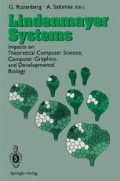Abstract
Suture anchors may be utilized for various applications in surgery, wherever soft tissue needs to be attached to bone. They represent the junction between bone and suture material, serving as anchors to the suture material which is used to tie soft tissue to bone. Even though suture anchors may also be used for exotic applications such as bladder suspension procedures, the main field of application is the upper extremity, chiefly the shoulder. Especially in arthroscopic surgery, suture anchors are of great value in the reconstruction of rotator cuffs, labrum defects or for tenodesis of the biceps tendon.
Access this chapter
Tax calculation will be finalised at checkout
Purchases are for personal use only
Preview
Unable to display preview. Download preview PDF.
References
Balch OK, Collier MA, DeBault LE. et al. (1999) Bioabsorbable suture anchor (co-polymer 85/15 D,L lactide/glycolide) implanted in bone: correlation of physical/mechanical properties, magnetic resonance imaging, and histological response. Arthroscopy 15:691–708
Barber F, Cawley P, Prudich J (1993) Suture anchor failure strength-an in vivo study. Arthroscopy 9:647–652
Barber F, Herber M (1999) Suture anchors update 1999. Arthroscopy 15:719–725
Barber F, Herber M, Click J (1997) Internal fixation strength of suture anchors-update 1997. Arthroscopy 13:355–362
Barber F, Herbert M, Click J (1995) The ultimate strength of suture anchors. Arthroscopy 11:21–28
Barber F, Herbert M, Click J (1996) Suture anchor strength revisited. Arthroscopy 12:32–38
Berlet GC, Johnson JA, Milne AD. et al. (1998) Distal biceps brachii tendon repair. An in vitro biomechanical study of tendon reattachment. Am J Sports Med 26:428–432
Bostman O, Hirvensalo E, Makinen J et al. (1990) Foreign body reactions to fracture fixation implants of biodegradable synthetic polymers. J Bone Joint Surg Br 72:592–596
Burkhart SS, Diaz Pagan JL, Wirth MA. et al. (1997) Cyclic loading of anchor-based rotator cuff repairs: confirmation of the tension overload phenomenon and comparison of suture anchor fixation with transosseous fixation. Arthroscopy 13:720–724
Carpenter J, Fish D, Huston L et al. (1998) Pull-out strength of five suture anchors. Arthroscopy 9:109–113
Gerber C, Beck M, Schneeberger A (1996) Suture material, in orthopaedic sports medicine, Saunders, Philadelphia, pp 140–146
Gerber C, Schneeberger AG, Perren SM. et al. (1999) Experimental rotator cuff repair. J Bone Joint Surg 81A:1281–1290
Kannus P, Leppala J, Lehto M et al. (1995) A rotator cuff rupture produces permanent osteoporosis in the affected extremity, but not in those with whom shoulder function has returned to normal. J Bone Miner Res 10:1263–1271
Rossouw D, McElroy B, Amis A et al. (1997) A biomechanical evaluation of suture anchors in repair of the rotator cuff. J Bone Joint Surg 79-B:458–461
Roth CA, Bartolozzi AR, Ciccotti MG. et al. (1998) Failure properties of suture anchors in the glenoid and the effects of cortical thickness. Arthroscopy 14:186–191
Warme WJ, Arciero RA, Savoie FH. III et al. (1999) Non-absorbable versus absorbable suture anchors for open Bankart repair. A prospective, randomized comparison. Am J Sports Med 27:742–746
Meyer DC, Fucentese SF, Ruffieux K, Jacob HAC, Gerber C (to be published) Mechanical testing of absorbable suture anchors. Arthroscopy
Meyer DC, Nyffeler RW, Fucentese SF, Gerber C (2002) Failure of suture material at suture anchor eyelets. Arthroscopy 18(9):1013–9
Editor information
Editors and Affiliations
Rights and permissions
Copyright information
© 2003 Springer-Verlag Berlin Heidelberg
About this chapter
Cite this chapter
Meyer, D.C., Lajtai, G., Gerber, C. (2003). Suture Anchors. In: Lajtai, G., Snyder, S.J., Applegate, G.R., Aitzetmüller, G., Gerber, C. (eds) Shoulder Arthroscopy and MRI Techniques. Springer, Berlin, Heidelberg. https://doi.org/10.1007/978-3-642-55604-3_4
Download citation
DOI: https://doi.org/10.1007/978-3-642-55604-3_4
Publisher Name: Springer, Berlin, Heidelberg
Print ISBN: 978-3-642-62771-2
Online ISBN: 978-3-642-55604-3
eBook Packages: Springer Book Archive

